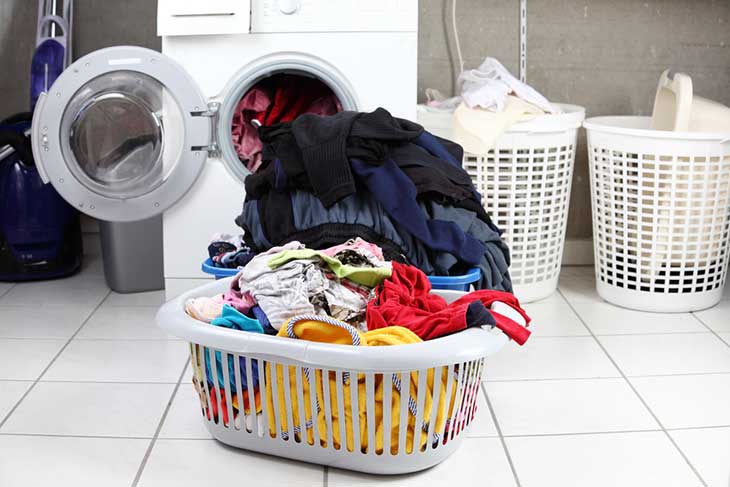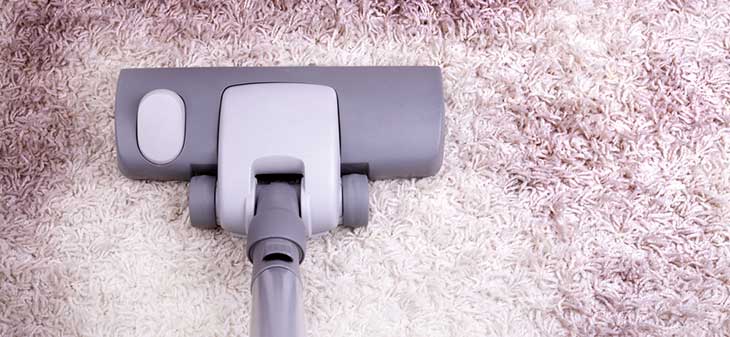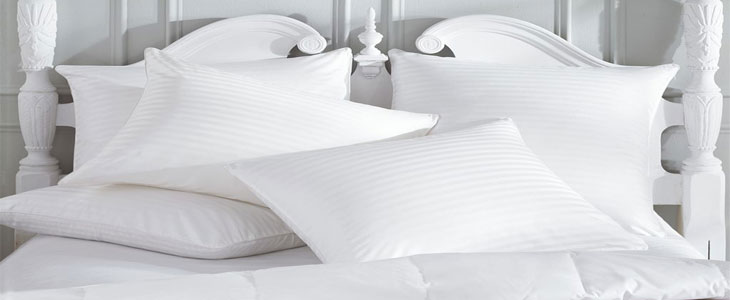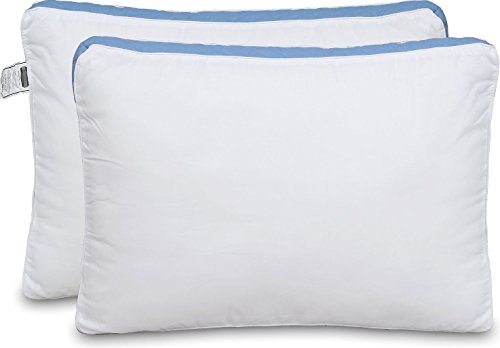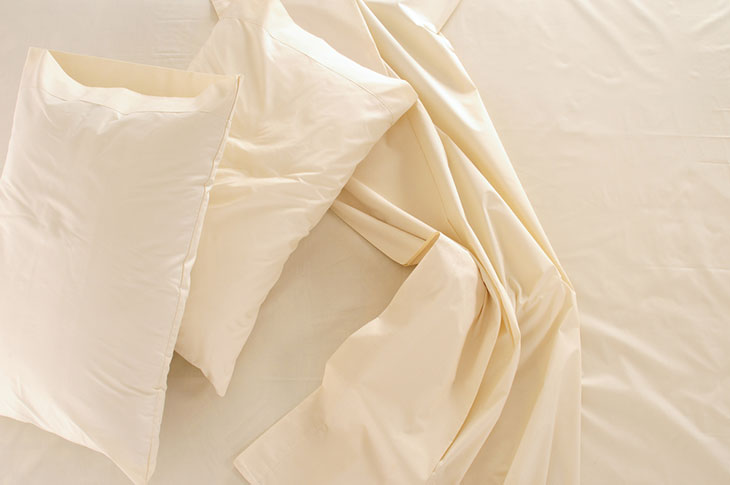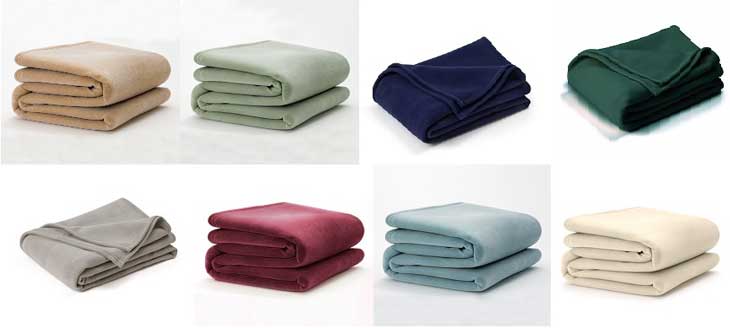Does Washing Kill Dust Mites?
Your allergies and asthma could be due in large part to dust mites, those pesky, microscopic creatures that thrive in curtains, bedding, mattresses, fabric couches and chairs, rugs, and carpet.
They are relatives of the spider, and they eat flakes of skin from humans and pets that they naturally shed. They love warm and moist environments.
These critters are impossible to completely eliminate, but you can do a lot to significantly reduce their numbers in your home and to relieve your allergy symptoms.
Washing is one way you can gain mastery over the dust mite situation in your home.
Putting your bedding in the washing machine has been scientifically proven to help reduce the number of dust mites in the home to levels low enough that people do not have as many problems with their allergies and asthma.
A simple trip to the laundromat or to your laundry room can make a positive impact on your health.
What Kills Dust Mites Naturally? – 10 Natural Ways
On a scale of one to completely disgusting, dust mites are probably not as high on the list as roaches, bed bugs or other pest infestations.
However, for those who already experience allergies or asthma, dust mites can be a big problem. The mites feed off of our shed skin scales and pet dander.
Dust mites don’t bite; it is their decaying bodies and excrement that cause many people to have an allergic reaction.
Luckily, there are plenty of ways to prevent dust mites or kill them if they are already a problem. Although there are the usual methods with chemicals you can either buy at the store or have the exterminator bring, there are also plenty of natural ways to prevent and kill dust mites.
Best Pillows for Side Sleepers with Allergies
It is estimated that as many as 50% of Americans suffer from allergies. Allergies are not just a daytime annoyance.
For many people, allergies – with the accompanying itchy eyes, stuffy nose and post nasal drip – also rob them of sleep. Since allergies inflame the nasal passages, snoring, difficulty breathing and obstructive sleep apnea may worsen, causing disrupted sleep.
There are many ways to alleviate nighttime symptoms; One of the most highly recommended is the use of hypoallergenic pillows and bedding.
More…
The reason is that over time, the filling of many pillows clumps together because of sweat and dead skin cells. Dust mites and mold – which are common allergy triggers – thrive in this environment. Hypoallergenic bedding will keep these at bay.
Side Sleeping
People – including allergy sufferers – have different sleeping styles. No matter how one sleeps, it is important to maintain good spinal alignment to avoid aches and pains.
For side sleepers – that is those who sleep on their side with legs straight or curled in a fetal position – a pillow with good, firm support is important to avoid neck and back strain.
The pillow should be high enough to keep the neck and spine in a natural horizontal line.
Quick Comparison: Best Pillows for side sleepers with allergies




Recommended pillows for side sleepers with allergies
1. Coop Home Goods Shredded Hypoallergenic Memory Foam Pillow
The Coop Home Goods Shredded Hypoallergenic Memory Foam Pillow with removable polyester and bamboo derived viscose rayon cover is a dust mite resistant and hypoallergenic option for allergy sufferers.
Made in the United States, this product features certified pure foam that is tested and free from chemicals.
The pillow comes in standard, queen and king sizes. The cover is removable and designed to keep sleepers cool. The inner pillow has a customizable shape and firmness due to shredded memory foam.
Pros
- There are several positive aspects to this product including the fact that the entire pillow is machine washable and can even go in the dryer.The cover is also removable for cleaning.
- The company guarantees that this pillow will not flatten or lose its support.
- The pillow can be customized to different shape and support levels. It can be bended, folded and fluffed without the foam losing its support.
- Since the inner pillow has a zippered opening, foam can be added or removed to perfect the support level for side sleepers.
- It doesn’t feel hard and fluffs up shortly after its vacuum sealed delivery.
- Coop Home Goods is so sure customers will love this pillow that the company offers a 30-day return guarantee and a 5-year limited warranty.
Cons
- While overall a good, high-quality product, some side sleepers may find that the pillow – as is – does not provide enough support for side sleeping.
- The price tag is also higher than the average pillow.
Verdict
Overall, the Coop Home Goods Shredded Hypoallergenic Memory Foam Pillow is hypoallergenic, completely washable and customizable making it a great, convenient every day pillow for allergy sufferers.
Though some may find it lacks support for side sleeping, foam can be added for more support.
2. Utopia Bedding Gusseted Queen Hypo Allergenic Quilted Pillow
The Utopia Bedding Gusseted Queen Hypo Allergenic Quilted Pillow is another option for side-sleeping allergy sufferers.
These durable, long-lasting pillows feature double stitching, a high thread count, a 100 percent cotton cover and a gusseted edge to maintain shape.
These pillows are available in queen and king sizes and are filled with a medium-firm blend of polyester gel fiber.
Pros
- Satin piping.
- Long lasting.
- Made of materials free from harmful substances.
- Cheaper than Coop Home Goods Shredded Hypoallergenic Memory Foam Pillow.
- Quilted 250-thread-count cotton construction.
- Not too soft and not too firm.
Cons
- Some side sleepers may find that these pillows are too soft and do not have enough support depending on preference.
- These pillows contain a polyester fill, which tends to go flat sooner than memory foam, so these may lose supportiveness after several months.
- Requires dry cleaning for the best results which some may find a hassle, but they can be washed with cold water and tumble dried on low.
Verdict
The Utopia Bedding Gusseted Queen Hypo Allergenic Quilted Pillow may not hold up as long as some other, costlier, pillows.
It can take more care to clean as well.
Overall, however, the Utopia Bedding Gusseted Queen Hypo Allergenic Quilted Pillow is a great low-cost, quality option for allergy suffering side-sleepers.
Conclusion
With so many people suffering from allergies at night, hypoallergenic pillows can be an important part of getting a good night’s sleep.
These pillows keep allergy triggers like dust mites and mold from growing in the bed.
Since people spend an average of 8 hours a night in bed, the comfort of the pillows is also an important consideration.
For side sleepers, it is important to maintain healthy spinal alignment. If the spine is not aligned, this causes strain and can lead to discomfort.
Side-sleepers need a supportive pillow that does not leave the neck at an angle. So, side-sleepers who also suffer from allergies may benefit from a supportive, hypoallergenic pillow.
Featured image By Jessicaalderson (Own work) [CC BY-SA 4.0 ], via Wikimedia Commons
5 Best Pillow Protectors for allergies
The pillow covers we choose can have huge health impacts. We sleep on those pillows every single night.
They collect a variety of contaminates, including skin flakes and dust particles. It's only natural that the build up can cause lasting health damage.
Thus why the selection of your pillow cover is so important. You need to choose the best pillow cover to avoid any build ups.
Vellux Original and Plush Blankets Review
Vellux blankets are a top choice for both hotel chains and families with children.
When you take a look at the quality, comfort, and hypoallergenic qualities of Vellux blankets, it’s easy to see why so many people love them.
Besides being oh-so-soft, these cozy blankets also are the best choice for keeping away dust mites.

